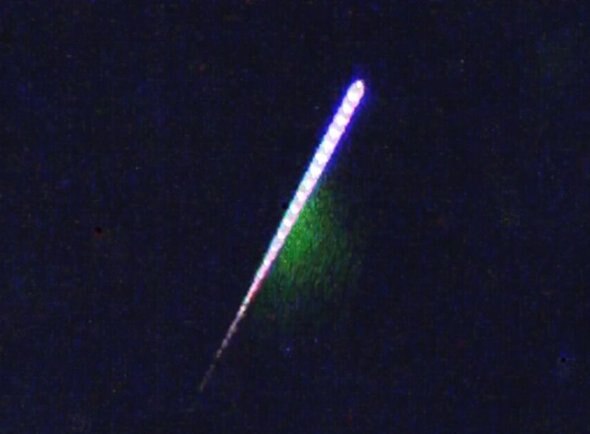Create a free profile to get unlimited access to exclusive videos, sweepstakes, and more!
NASA Video Shows Meteor Shower … From Above!

Late last week marked the peak of the annual Perseid meteor shower, generally one of the most dependable shooting star shows of the year. You can usually spot about a meteor per minute streaking across the sky, leaving behind a momentary trail of vaporized rock that fades rapidly as it cools in the upper atmosphere.
Meteors burn up about 90 to 100 kilometers above the Earth’s surface. So what happens if you happen to be 400 kilometers up, orbiting the Earth? What would it look like if you were looking down, toward the Earth, during a meteor shower?
It would would look like this:
That video was made on Wednesday using a camera on the International Space Station, specifically designed to look for meteors from above.
Did you see the two meteors in the clip? One happens at six seconds in, the other at 16 (the bright flash at the start of the video is lightning in a storm). It looks like they’re right over the surface, but perspective distorts that; they’re way up high.
Here’s a funny thing, too: At best only one of those meteors was from the Perseids! The meteors in a shower all appear to come from one part of the sky, as the Earth plows through the debris. It’s like driving through a rain storm, where the drops hit your front windshield because that’s facing into your direction of travel.
But the two meteors in the video are traveling at right angles to each other (one moves up, the other to the right). From the height of ISS all Perseids should travel in more or less the same direction, so at least one of those was not a Perseid! It’s possible neither were, but I can’t be sure without knowing the direction of the ISS movement, the exact time of the shot, and information like that. Still, the video is very cool.
It was made as part of a joint venture between the U.S. Southwest Research Institute and Japan’s Planetary Exploration Research Center, part of a project called Meteor Composition Determination. Besides taking video like the one above it also employs a special type of spectroscopic device called a transmission diffraction grating. This acts like a prism, breaking up the light of the meteors into colors. The resulting spectrum reveals the composition of the meteoroid (the solid bit of debris that burns up); every element has a unique pattern of colored light it emits as it glows. Since these meteors come from comets, it’s a way of studying comets right here on (well, above) Earth.
I went out with friends to see the shower on Friday night. We didn’t see too many over the two hours we were there; maybe a dozen or so. To be honest, being north of Los Angeles I’m surprised it was dark enough to see any, and the Moon was up too). But in this case it was just as much fun to hang out with friends as it was to watch the show. Meteor showers are wonderful, and I urge you to go out and watch one sometime. The next good one is probably the Leonids in November, and then the Geminids in December. Mark your calendars!


























